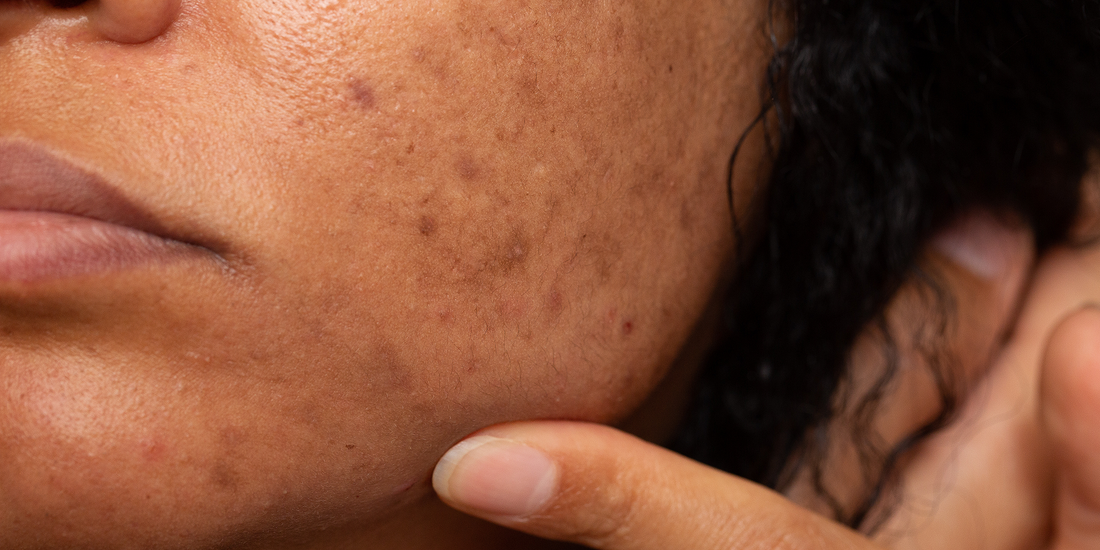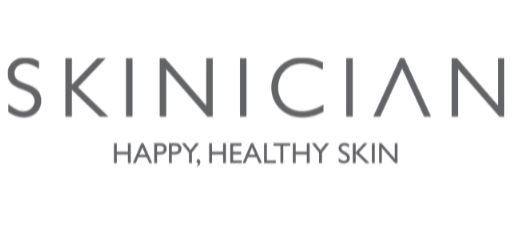
How to treat pigmentation: the causes, the prevention and the treatments
Share
Age-related pigmentation, commonly known as age spots or liver spots, refers to the darkened patches of skin that typically appear on areas exposed to the sun, such as the face, hands, arms, and shoulders. These spots are generally harmless and do not require medical treatment. However, if you are concerned about their appearance, there are several causes, treatments, and preventive measures you can consider.
What causes pigmentation on the face?
Facial pigmentation, also known as hyperpigmentation, is a common dermatological concern that affects many individuals worldwide. It manifests as dark patches or spots on the face, causing an uneven skin tone. While pigmentation is typically harmless, it can be a source of self-consciousness and may lead individuals to seek effective treatment options. To tackle this issue, it is crucial to understand the underlying causes of facial pigmentation.

Sun Exposure:
One of the primary culprits behind facial pigmentation, is prolonged exposure to the sun's harmful ultraviolet (UV) rays. When the skin is exposed to the sun, it triggers the production of melanin, the pigment responsible for skin colour. Excessive sun exposure leads to an overproduction of melanin, causing dark spots or freckles to appear on the face. This condition is commonly referred to as sunspots.
Hormonal Changes:
Hormonal imbalances can also contribute to facial pigmentation, particularly in women. Conditions such as pregnancy (melasma or the "mask of pregnancy"), oral contraceptive use, or hormonal therapies can stimulate the production of melanin. This leads to the development of dark patches, usually on the forehead, cheeks, and upper lip.
Post-Inflammatory Hyperpigmentation (PIH):
When the skin undergoes inflammation or trauma, such as acne, eczema, allergic reactions, or injury, it may respond by producing excess melanin, resulting in PIH. These dark spots can persist long after the initial inflammation or injury has healed.
Genetic Predisposition:
Genetic factors can play a significant role in determining an individual's susceptibility to facial pigmentation. Some people naturally have more active melanocytes, the cells responsible for producing melanin, leading to a higher chance of developing pigmentation issues.
Ageing
As you age, your skin undergoes various changes, including a decrease in cell turnover and an accumulation of damaged melanocytes, which can contribute to the development of age spots.
When do age spots develop, and who is at risk of getting them?
Age spots, also known as liver spots, typically develop in individuals over the age of 50, although they can appear earlier in some cases. They are flat, brown or black spots that commonly occur on areas of the skin that are frequently exposed to the sun, such as the face, hands, shoulders, and arms.
The main cause of age spots is long-term exposure to ultraviolet (UV) radiation from the sun. UV rays accelerate the production of melanin, the pigment that gives color to the skin. Over time, this increased melanin production can lead to the formation of age spots. Other factors that may contribute to their development include genetic predisposition, hormonal changes, and certain medications.
Whilst age spots are generally harmless and don't require medical treatment, they can be cosmetically undesirable for some individuals. People with fair skin are more susceptible to developing age spots since they have less melanin to protect their skin from UV damage. Additionally, individuals who spend significant time in the sun without adequate protection, such as sunscreen or protective clothing, have a higher risk of developing skin ageing pigmentation.
It's important to note that age spots are generally harmless, but any new or changing spots should be evaluated by a dermatologist to rule out the possibility of skin cancer or other skin conditions.
How to spot pigmentation?

To spot pigmentation on the skin, you can follow these steps:
Examine your skin: Take a close look at your skin, particularly areas that are often exposed to the sun, such as the face, neck, arms, and hands. Pigmentation can appear as dark or discolored patches on the skin.
Look for uneven skin tone: Pigmentation often causes uneven patches of color on the skin. You may notice areas that are darker or lighter than the surrounding skin.
Check for freckles or sunspots: Freckles are small, flat, and light brown spots that commonly appear on fair-skinned individuals. Sunspots, also known as age spots or liver spots, are larger, darker spots that usually develop in areas exposed to the sun over time.
Notice changes in pigmentation: Pay attention to any changes in the appearance of your skin. If you notice new or rapidly growing pigmented spots, it's important to consult a dermatologist for evaluation, as this could be a sign of a more serious condition.
Use natural light: Examine your skin in natural daylight, as artificial lighting can sometimes alter the appearance of pigmentation. Stand in front of a window or go outside to get the most accurate view of your skin.
How to prevent and treat pigmentation?
There are a few non-invasive products that you can try to help fade pigmentation and prevent further pigmentation on the skin.
Apply SPF
Regularly apply a broad-spectrum sunscreen with an SPF of 30 or higher to protect the skin from harmful UV rays.
Seek shade
Seek shade and wear protective clothing, such as hats and sunglasses, when spending time outdoors.
Apply Vitamin C
Consider using topical creams containing ingredients like hydroquinone, retinoids, or vitamin C to lighten and reduce the appearance of sunspots.
Products containing antioxidants like vitamin C or green tea extract can help neutralize free radicals and protect the skin against sun damage. Vitamin C speeds up cell turnover, helping to diminish pigmentation spots leaving skin looking brighter and pigmentation visibly reduced.
Retinol
Regular use of retinol or retinoid-based products can promote cell turnover and reduce the appearance of age spots over time.
Exfoliation
Incorporating a mild exfoliant into your skincare routine can help remove dead skin cells and improve the overall texture and tone of your skin.
Don't pick
Avoid picking or squeezing acne lesions, as it can worsen inflammation and increase the likelihood of pigmentation.
Improve your skincare routine
Incorporate gentle skincare routines, including the use of mild cleansers and moisturizers, to promote healing and prevent further irritation.
Skincare to help treat pigmentation
CLEANSER TO HELP SKIN PIGMENTATION
Our Advanced Pro-Radiance Enzyme Cleanser is a luxurious foaming cleanser that contains a blend of AHA’s to gently exfoliate and revive dull complexions. The naturally derived fruit enzymes work to stimulate lower layers of the skin to produce new skin cells, speeding up cell turnover and remove densely pigmented cells for a brighter and more even skin tone.
MOISTURISER TO HELP SKIN PIGMENTATION
One of the most important ways to prevent further skin pigmentation is by using a daily SPF and our Advanced Time Delay Day Cream contains SPF 30. This multifunctional moisturiser, hydrates skin with ingredients such as hyaluronic acid and also contains Regenacell TM which helps regenerate skin cells, helping to fade pigmentation.
TREATMENTS TO HELP SKIN PIGMENTATION
There are a few key ingredients that we recommend in including your skincare routine to help fade the appearance of pigmentation.
Retinol is a powerhouse ingredient when it comes to treating ageing skin. Retinol helps to resurface and replenish skin while you sleep and we decided to supercharge our Overnight Retinol Powerbalm by combining retinol with Dermapep TM which works in conjunction with the retinol to stimulate collagen, elastin and hyaluronic acid to reduce the appearance of ageing pigmentation.
Another ingredient which helps promote the production of collagen is Vitamin C. Our Vitamin C Elixir is a non-greasy facial oil formulated with a cocktail of Vitamins A,C,D and E to diminish pigmentation and boost collagen for healthy, glowing skin.
And of course, one of the areas that is most effected by the signs of pigmentation is around the eye area, so we have developed our Peptide Eye Complex which is clinically proven to provide an instant and long-term reduction in dark spots and fine lines. If you’re looking for an eye cream supercharged with skin-plumping ingredients, our Peptide Eye Complex is one of our most advanced skincare solutions yet.
Age-related pigmentation questions answered
How do you get rid of age pigmentation?
You may not get rid of age pigmentation entirely, it is a natural part of ageing, but with a good skincare routine, consistent use of SPF and incorporating products such as Retinol and Vitamin C into your routine, you may be able to reduce the appearance age spots.
What is age-related pigmentation on face?
Age-related pigmentation on the face is where dark spots appear on the skin and these can be the product of UV exposure, hormones or genetic factors.
Does skin pigmentation change with age?
Skin pigmentation can change with age, but the extent and nature of these changes can vary among individuals. Depending on factors such as using daily SPF to protect the skin, hormonal differences and genetics.
What is the difference between age spots and pigmentation?
Age spots are a specific type of pigmentation that is commonly associated with sun exposure and appears as dark spots on the skin, whereas pigmentation is a broader term that encompasses various skin colour-related issues, including both hyperpigmentation and hypopigmentation.
Where do you develop age spots?
You are most likely to develop age spots in areas that are most commonly exposed to the sun such as your face, neck, hands, shoulders and upper back.
For more on ageing skin, take a look at:
